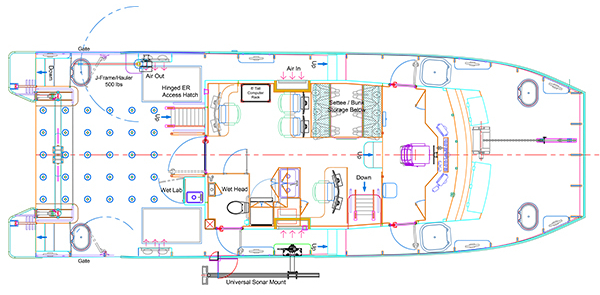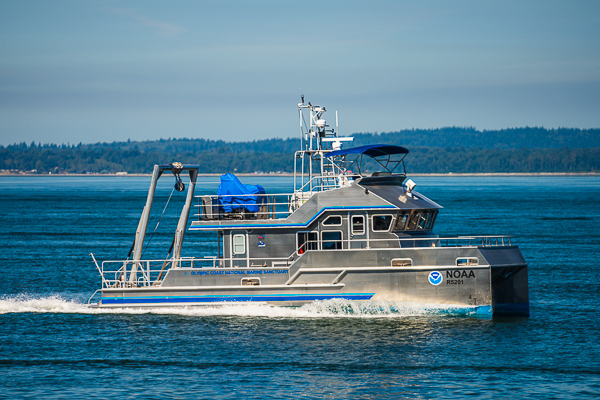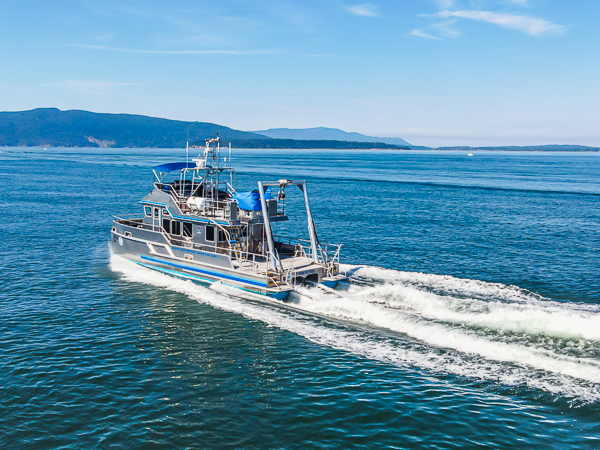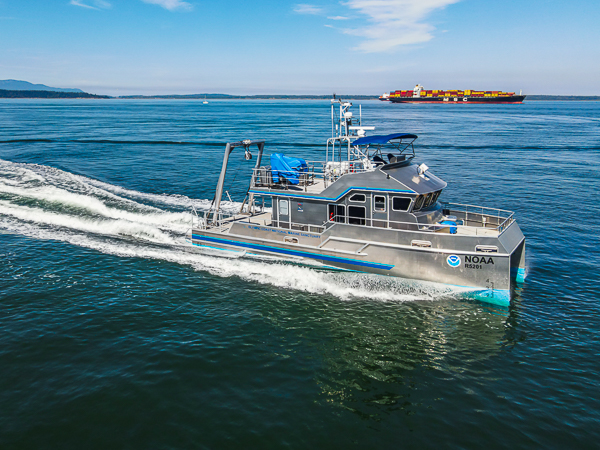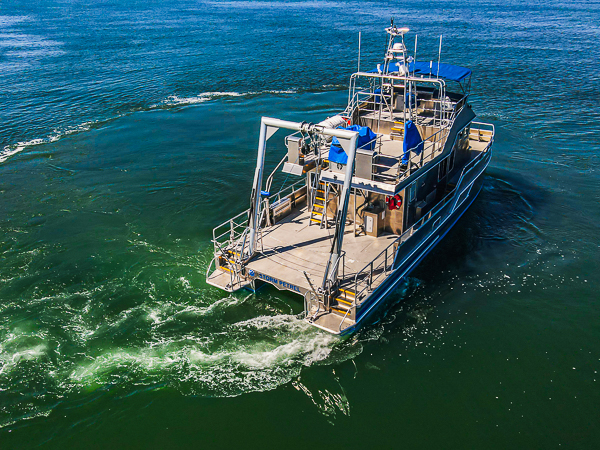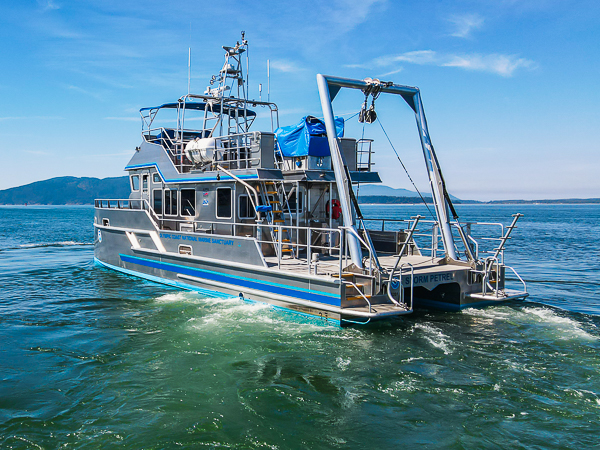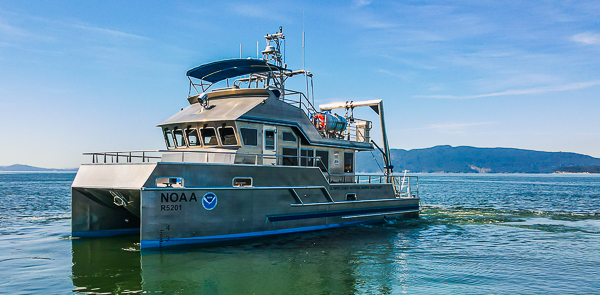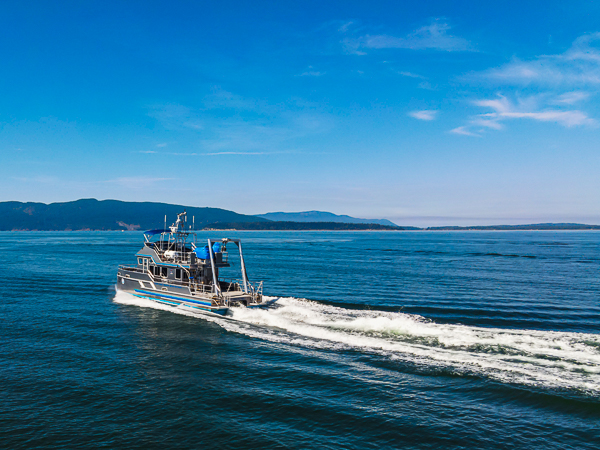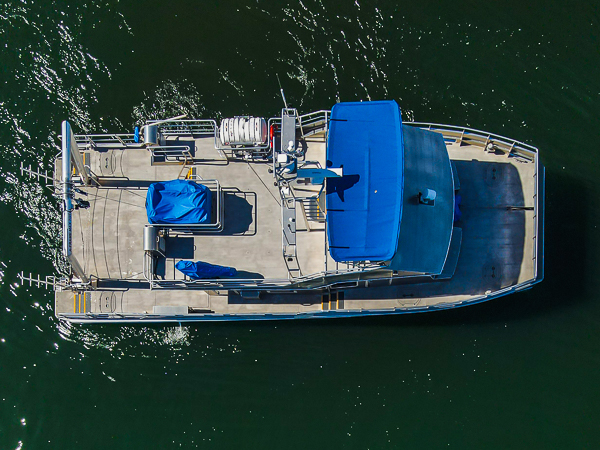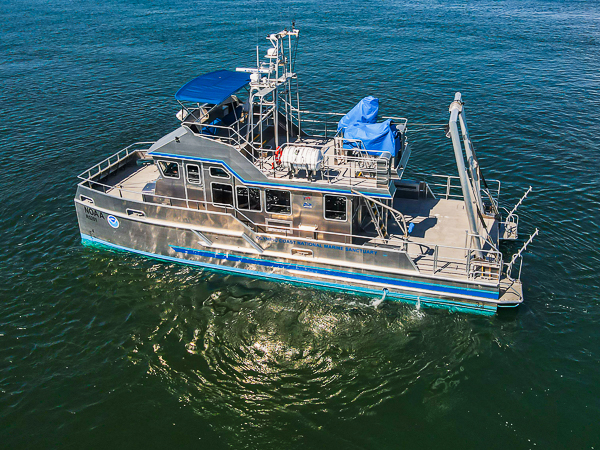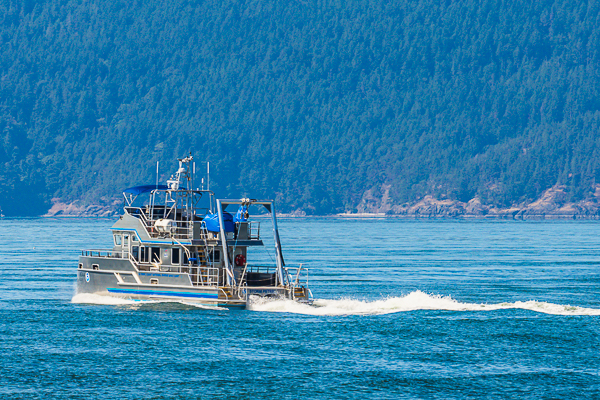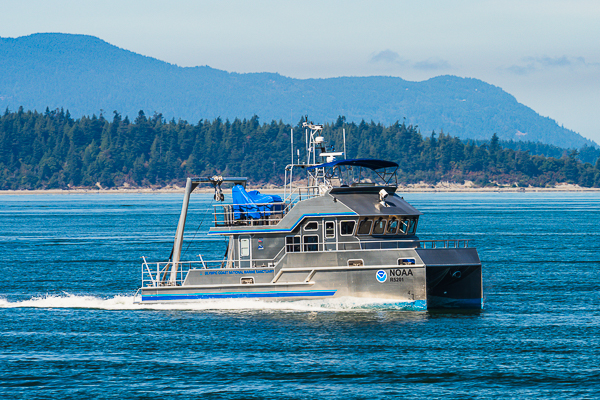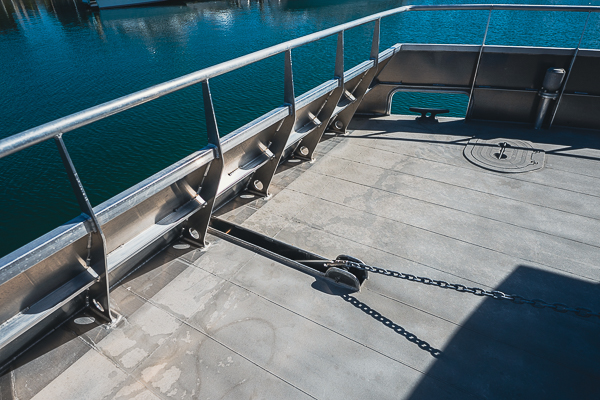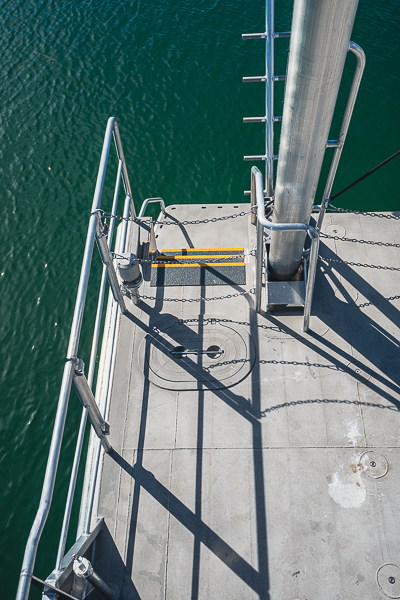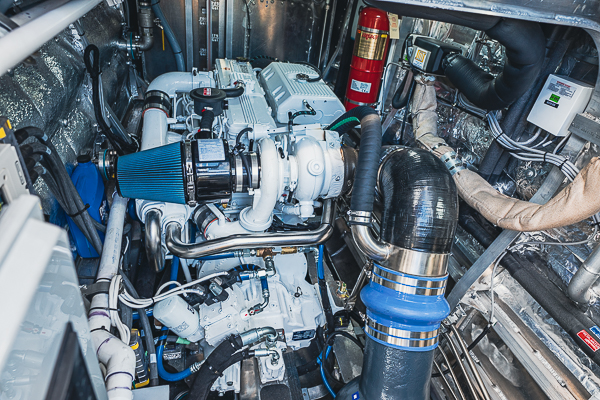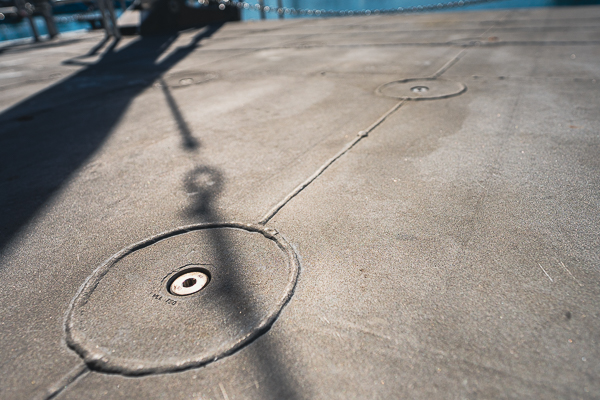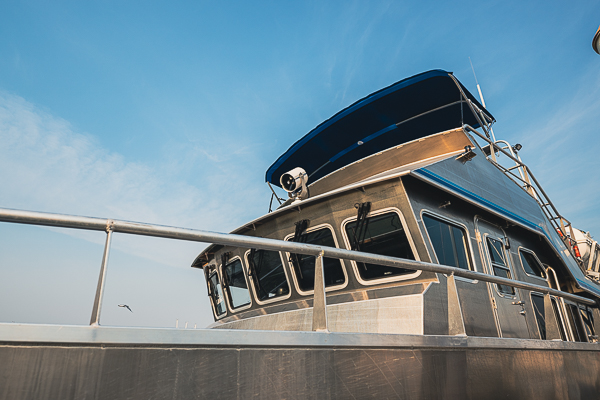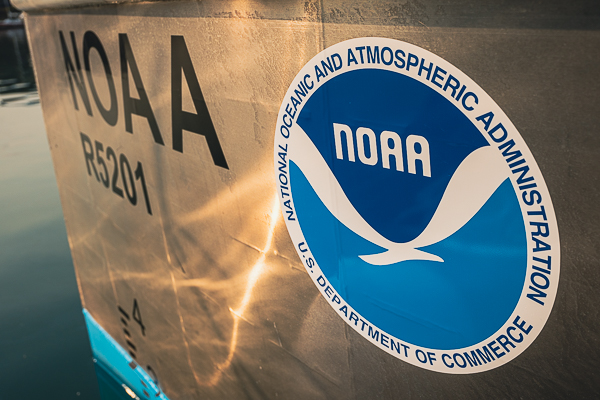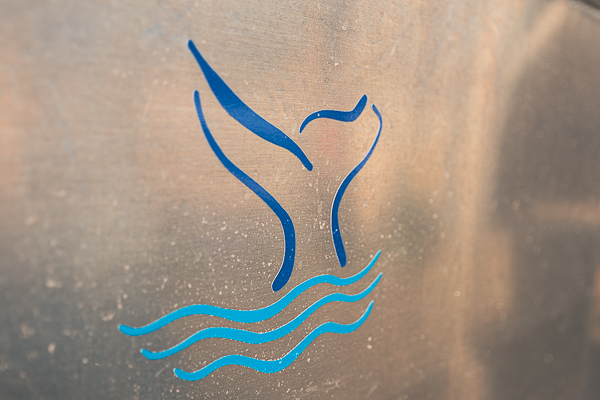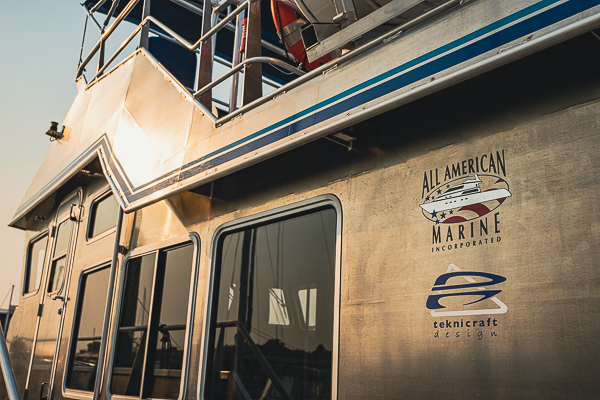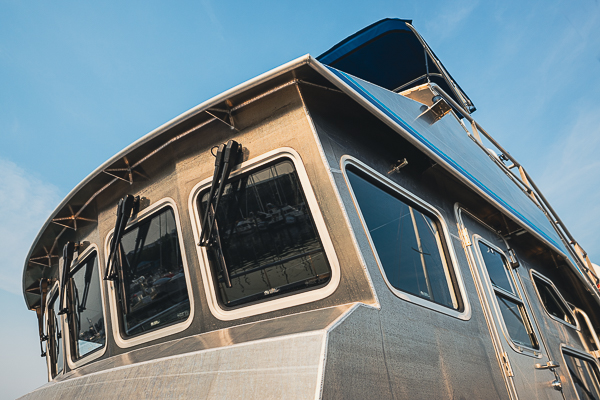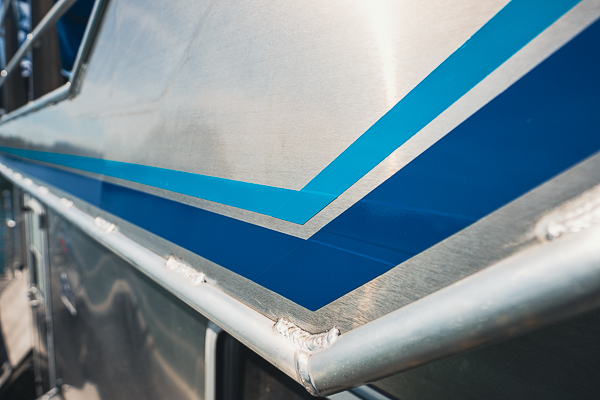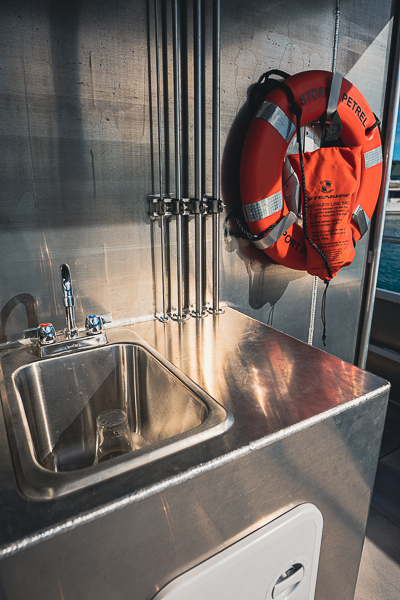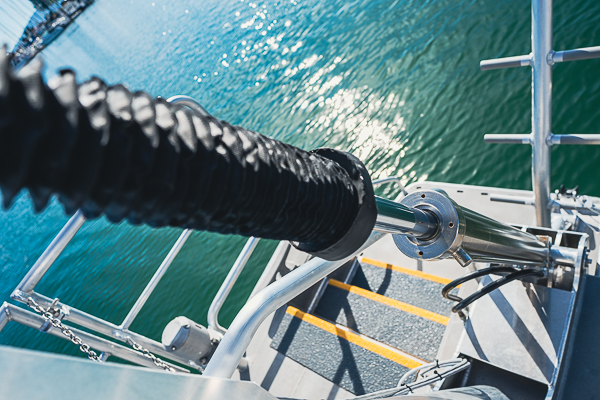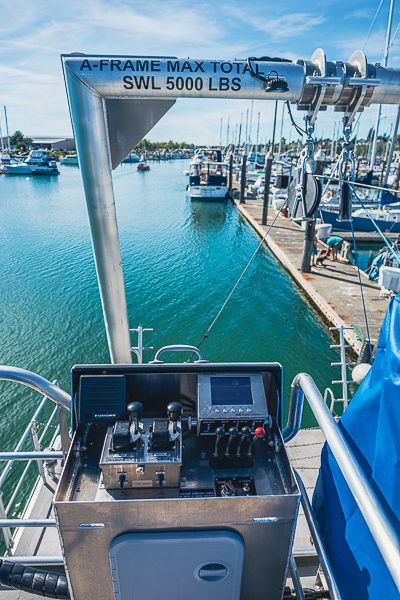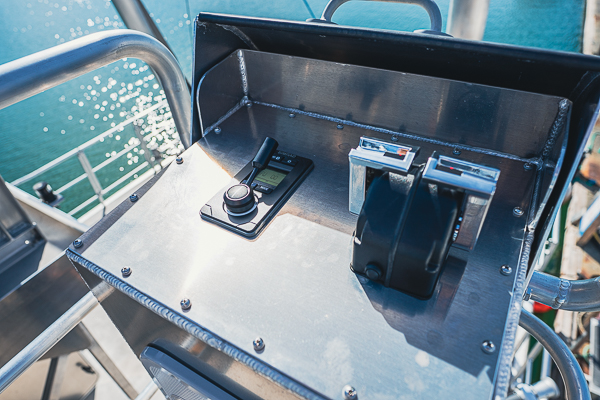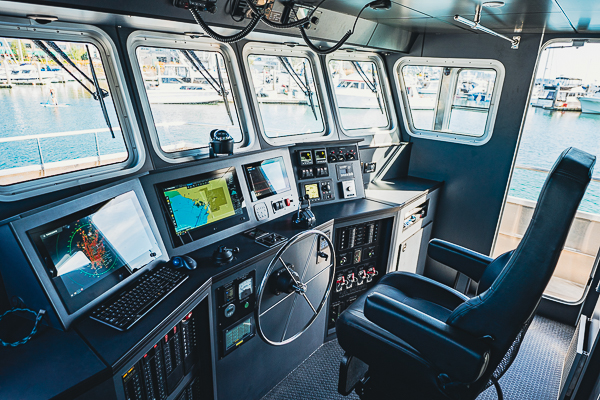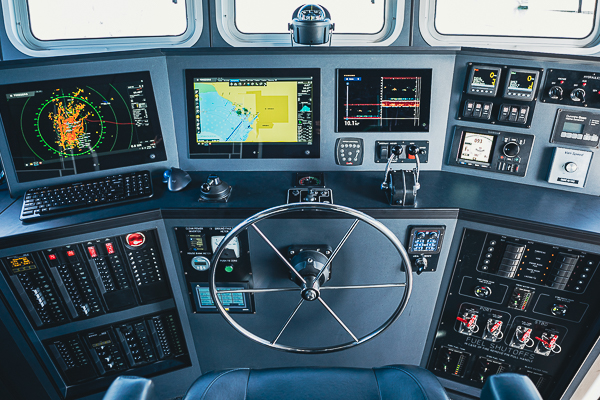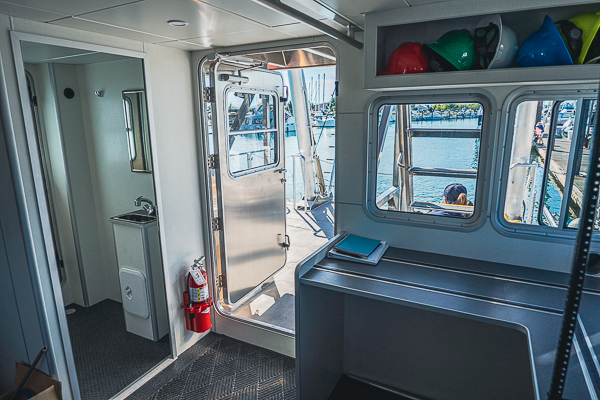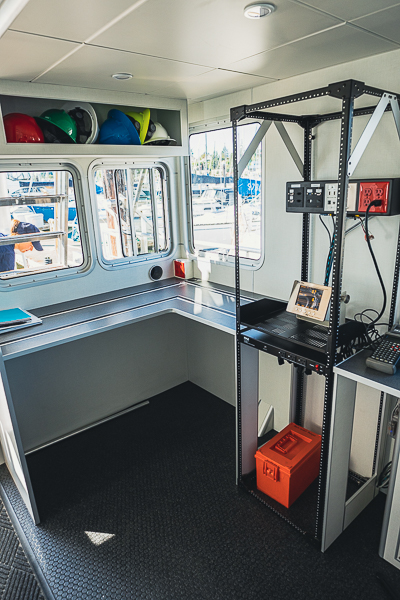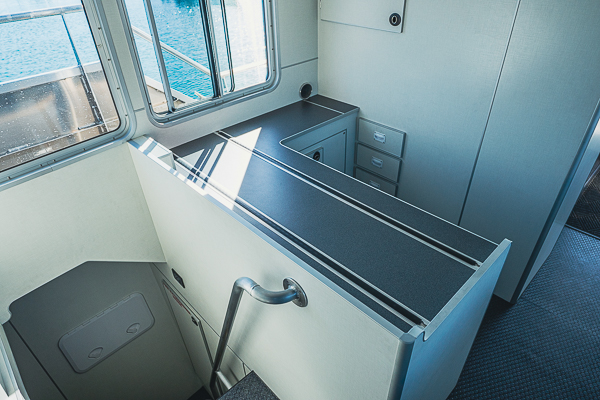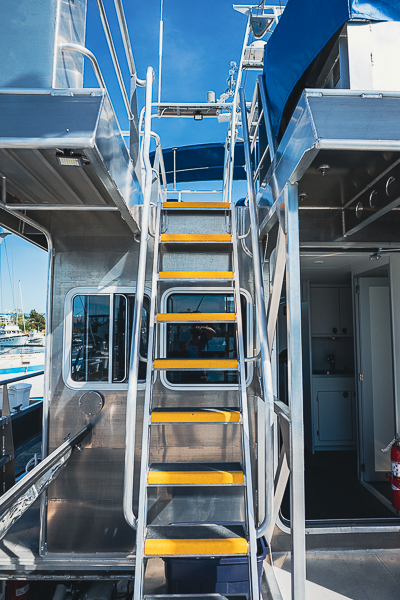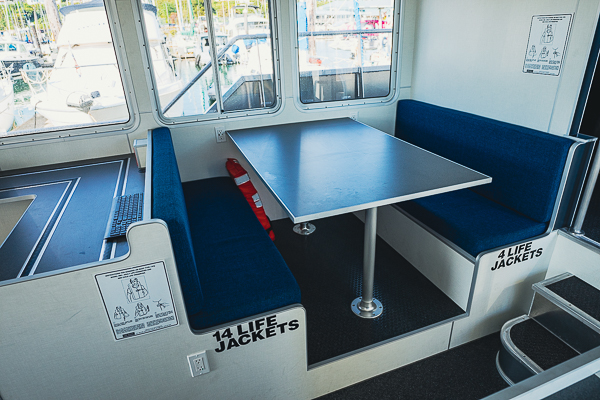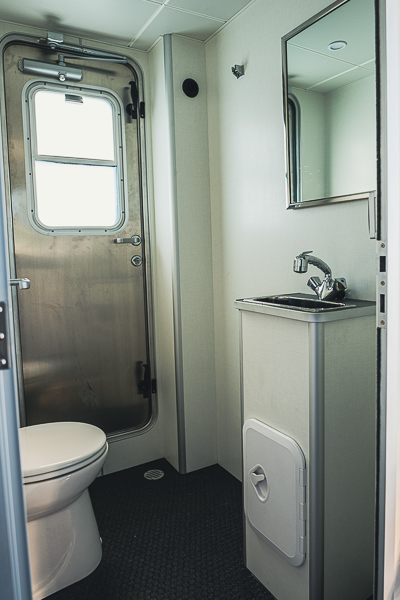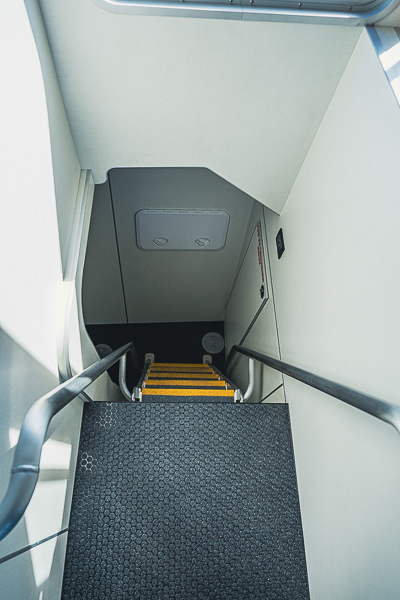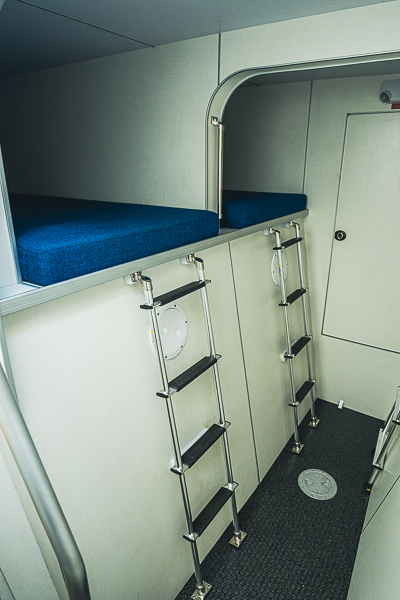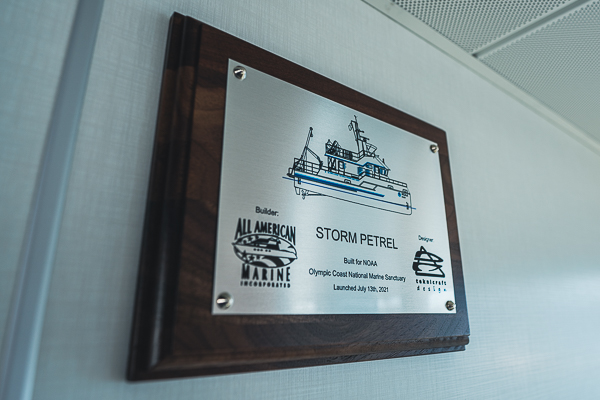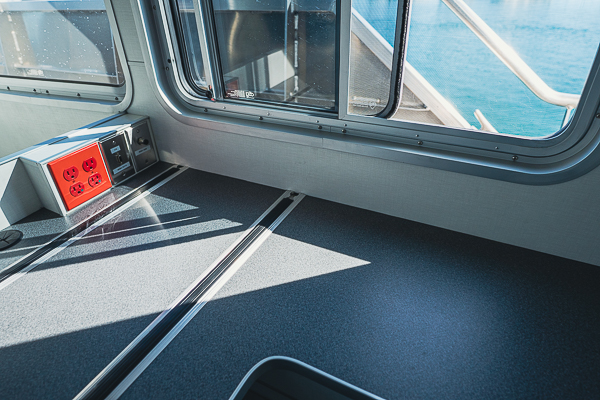All American Marine (AAM) has delivered a 50’ Research Vessel for the National Oceanic and Atmospheric Administration (NOAA), designated for the Olympic Coast National Marine Sanctuary in Washington State. AAM constructed the twin-engine Teknicraft Design vessel to USCG Subchapter T standards. The vessel can carry up to 18 personnel on board on a near coastal route. Olympic Coast National Marine Sanctuary OCNMS) includes 3,188 square miles of marine waters off the rugged Olympic Peninsula coastline. The sanctuary extends 25 to 50 miles seaward, covering much of the continental shelf and several major submarine canyons.
The semi-displacement catamaran hull for this vessel was developed by Nic de Waal of Teknicraft Design in Auckland, New Zealand. The design integrates a Teknicraft hull shape, complemented by Teknicraft’s signature integration of a wave piercer positioned between the catamaran sponsons to break up wave action and ensure reduced drag while conducting research missions. For the operator, one of the most valuable features of this vessel is the excellent fuel economy. Powered by twin Cummins QSC8.3 engines with twin propellers, this custom vessel will be a valuable asset for NOAA’s specific mission. The vessel will host various research missions and visiting scientists concentrating on seafloor mapping, habitat characterization, data collection, and monitoring ocean species’ health and marine wildlife.
“All American Marine worked diligently with Teknicraft to design a flexible platform that could quickly and easily be reconfigured depending on the current mission. This feature was critical for NOAA’s research purposes,” stated Ron Wille, All American Marine’s President and COO. “All American has constructed a number of vessels for NOAA, and we are always excited to work with this essential agency. The Office of Marine Sanctuaries serves as the trustee for a network of marine protected areas encompassing more than 600,000 square miles of marine and Great Lakes waters from Washington state to the Florida Keys and from Lake Huron to American Samoa.”
There is approximately 250 square feet of working space on the aft deck, with a complete complement of working gear and an extensive grid of deck sockets. The deck sockets are spaced every two feet and allow equipment and gear to be secured, moved, or removed from the working deck. A flybridge with a bimini top covers the upper deck, allowing vessel operations from a higher elevation while conducting research missions. The top deck also features an Interocean Conduction Wire Winch, Hauling Winch, and a Morgan 300.4 crane. The main deck features an adjustable A-Frame for launching scientific equipment. Additional features of the research vessel include both a wet laboratory for examining specimens and a dry laboratory for processing data. The vessel’s main deck is a fully equipped galley and comfortable dinette with settee/bunk, kitchenette, and wet head. NOAA added several options to onboard the vessel, including an upgrade on the working deck equipment, a removable Universal Sonar Mount where additional scientific equipment may be placed, and an HVAC upgrade.
“A larger, more stable vessel will not only expand the potential for OCNMS operations but also make it a more viable asset for our partners,” stated Kevin Grant, deputy superintendent of Olympic Coast National Marine Sanctuary. “This new vessel will help the sanctuary provide science-based solutions that address evolving environmental pressures on our ocean and coasts.”
AAM has a proven track record and has constructed many previous, highly successful vessels for NOAA, such as the R/V Auk, R/V Shearwater, R/V Fulmar, and R/V Manta in addition to numerous 30’ Survey Launches.

